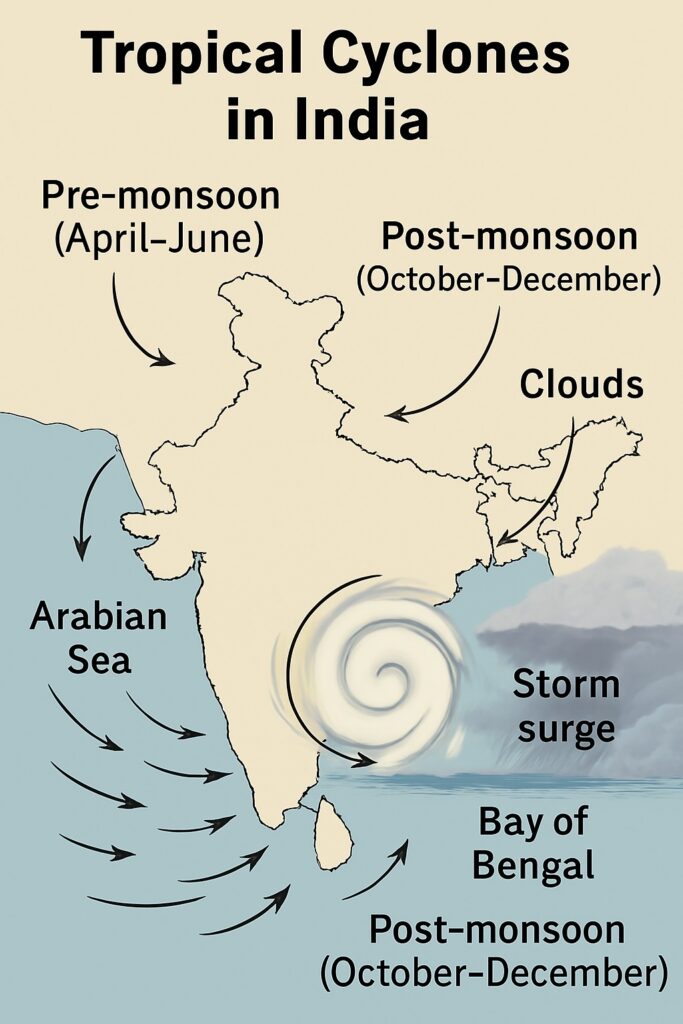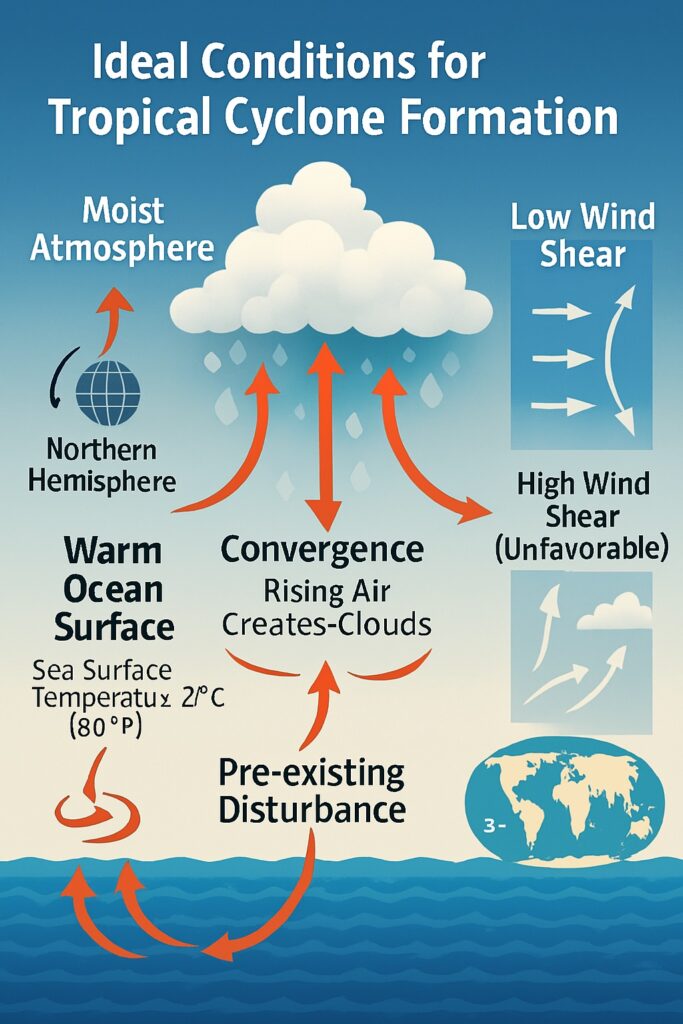Tropical cyclones are among the most devastating natural disasters that India faces, causing widespread damage to property and human lives every year. In this article, we will explore the causes and impacts of tropical cyclones in India, and discuss some of the measures that can be taken to mitigate their effects.

Table of Contents
What is Tropical Cyclone?
Tropical cyclones, also known as hurricanes or typhoons, are intense low-pressure weather systems that originate over warm ocean waters near the equator. These storms are characterized by high wind speeds, heavy rainfall, storm surges, and sometimes, tornadoes.
Tropical cyclones are intense circular storms that originate over warm tropical oceans and are characterized by low atmospheric pressure, high winds, and heavy rainfall. In India, these cyclones are among the most devastating natural disasters, impacting lives, property, and livelihoods, especially along the eastern and western coastal regions.
The ideal conditions for the formation of tropical cyclones
- Warm ocean waters: The ocean waters need to be at least 27°C (80°F) to fuel the storm.
- Moisture: The atmosphere needs to be moist to provide the necessary humidity for the storm to form.
- Coriolis force: Tropical cyclones are caused by the effect of Coriolis Force. It helps in the spin of the wind.
- Low wind shear: Wind shear can disrupt the vertical structure of the storm, so low wind shear is necessary for a tropical cyclone to form and strengthen.
- Convergence: There needs to be convergence or a meeting of air masses that causes the air to rise and form clouds.
- Pre-existing disturbance: Often, a pre-existing disturbance such as a tropical wave or low-pressure system is needed to start the cyclone’s development.
- Location: Tropical cyclones typically form in the warm waters of the tropics, between 5° and 30° latitude, in areas where the ocean waters are warm and the atmospheric conditions are favorable.

Causes of Tropical Cyclones in India
Tropical cyclones in India are primarily caused by the heating of the Indian Ocean, which creates a low-pressure area that draws in moist air from the surrounding areas. These storms usually occur between April and December, with the peak season being between August and November.
Impacts of Tropical Cyclones in India
It can be severe, with strong winds and heavy rainfall causing extensive damage to infrastructure, homes, and agriculture. Floods and landslides are also common, leading to loss of life and displacement of people. In addition, cyclones often disrupt transportation and communication systems, causing further inconvenience to the affected population.
Precautions for Tropical Cyclones
To mitigate the impact of tropical cyclones, it is essential to take preventive measures and prepare for emergencies. These may include early warning systems, evacuation plans, reinforcing infrastructure, and stockpiling essential supplies. It is also crucial to raise public awareness about the risks associated with tropical cyclones and how to prepare for them.
Conclusion
Tropical cyclones are a recurring threat to India, and the country needs to be prepared to face them. By understanding the causes and impacts of these storms and taking appropriate precautions, we can minimize the damage they cause and protect the lives and livelihoods of the people.
Read: Geography Notes